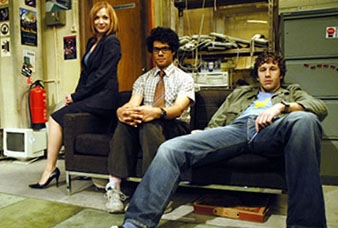
One consequence of my BASiL project is a critical, and hopefully objective, review of the spell mechanics found in Spell Law. I’ve blogged on “deconstructing spell law” under a number of topics here on the Rolemasterblog; perhaps too many times to provide relevant links. But today’s blog is related to my previous posts on Resistance Rolls (HERE and HERE) and might be helpful to review when reading this entry.
Spell Law establishes some basic classes of spells: Healing, Informational, Elemental, Force etc. It feels like the foundation of a consistent set of principles that covers various spell effects, but unfortunately falls short. I dropped this entirely in BASiL for now, but I’m in a review process and may reinsert spell types again. {I haven’t reviewed RMU enough to see how they might have address this issue}. At issue is the varying classifications of spells compared to the spell resolution.
Three Types of Fire Attacks.
As an example let’s review the differences between Firebolt, Wall of Fire and Call Flame. All are classified as “Elemental” spells. Firebolt has it’s own attack table and Directed spell skill to resolve attacks like a traditional weapon. A target’s defense is determined by AC and defensive bonus. Wall of Fire is a fixed effect that delivers a Heat Critical and specifically states that there is no RR. Call Flame doesn’t specify a resolution, but based on RAW, I believe a BAR is rolled and the initial target is given a RR. One could argue that the missile style of the Firebolt lends itself to a weapon attack resolution, the Wall of Fire is in a fixed position and thus has a unavoidable effect if walked through or touched. Call Flame is a bit of a hybrid. It could be considered a targeted spell (like the Firebolt) when manifesting (takes 1 rnd to form) and then a fixed unmoving effect (like Wall of Flame) for it’s duration of 1 rnd/lvl.
I’ve got no problem with Firebolt and Wall of Flame resolution, but does Call of Flame require more thought? Perhaps a better resolution is to treat the manifestation as a Fireball for attack purposes and then a Wall of Flame for the spells duration. Why am I parsing this?
I don’t think a physical attack, whether Elemental or Force, should be resolved using a magic realm resistance roll. Essence RR’s are modified by the Empathy stat. If Call Fire was imaginary or a nerve attack then ok, I might buy that argument. But Call Fire is actual flames–any defense against that should be physically based: quickness, a “dodge” or maybe even an intuitive reflexive flinch.
Let’s use a more apt comparison: Fireball vs Vacuum. Both are aimed, area spells but neither have a directed spell skill. Fireball is an explosive burst of fire and is resolved on a attack table using physical parameters: range, area of effect, defenders DB etc. Vacuum is a “Force” spell, but still an implosive burst of air. It’s a real, physical manifestation and yet, a target makes a v. Essence resistance roll.
There are numerous examples of similar spells that are physical attacks, don’t have their own attack table but are treated like intangible magical effects that can be mitigated by a magical resistance. It just doesn’t work for me. So what are some options?
- Generate individual attack tables for any applicable spells. That sounds like a lot of work, and more tables.
- Have the spells use existing established attack tables to save the extra work, but to model physical attacks and physical defenses.
- Establish a Resistance Roll that is based on physical stats. Qu/Qu/Int for example? This is the metaphorical Dodge; a slight twist of the body, a ducking of the head or similar that avoids the spell damage.
- Allow a targeting process that if successful, inflicts a mandatory result. Basically a Wall of Fire but with a accuracy roll.
- Use the “Dodge” skill with these types of spells (physical attacks that don’t have it’s own attack table).
If you’ve followed my BASiL project you know that I generally opted for #2. Plant attacks use the Grappling Attack Table, Wave Attacks utilize the Ram/Butt/Bash Table etc. Since these have attack tables I do allow for directed spell that models a casters mastery and increasing efficiency of the spell.
However, I’ve also experimented with a physical resistance roll that is used for reaction times: ambushes, physical spells etc. Like many of you, I will continually tinker with my house rules, but one thing is certain: I don’t believe that using magical resistance against a physical attack (magic or otherwise) is a good resolution rule.
What do you think?










